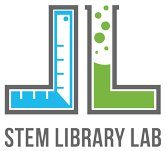by Callie Oliver | Jan 4, 2019
(MS.PS1A.e) Solids may be formed from molecules, or they may be extended structures with repeating subunits (e.g., crystals).
by Callie Oliver | Jan 4, 2019
(MS.PS1A.a) Substances are made from different types of atoms, which combine with one another in various ways. Atoms form molecules that range in size from two to thousands of atoms.
by Callie Oliver | Jan 4, 2019
(UE.ESS3C.a) Human activities in agriculture, industry, and everyday life have had major effects on the land, vegetation, streams, ocean and the atmosphere. But individuals and communities are doing things to help protect Earth’s resources and environments.
by Callie Oliver | Jan 4, 2019
(UE.ESS2C.b) Liquid water can become the gas form of water (water vapor) and liquid water can become a solid as ice.
by Callie Oliver | Jan 4, 2019
(UE.ESS2C.a) Nearly all of Earth’s available water is in the ocean. Most fresh water is in glaciers or underground; only a tiny fraction is in streams, lakes, wetlands, and the atmosphere.

